#16th c. costume
Text

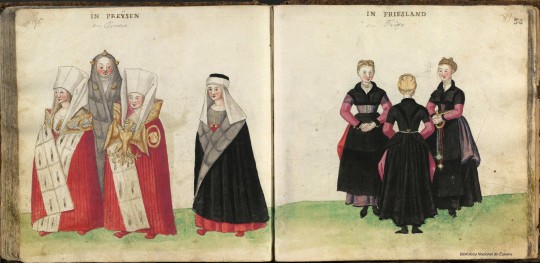


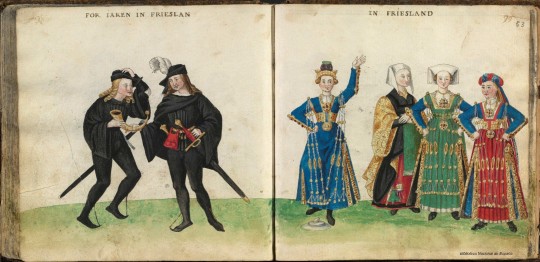

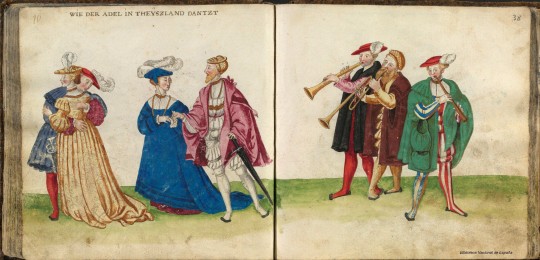
Códice de Trajes, costumes from the realms of Charles V, Holy Roman Emperor and King of Spain, made in Germany in mid 16th century (1540s-1550s)
Prussia
Prussia and Friesland
Schwabia and Elzach
Juelich
Frisia
Germany
German dance
#germany#manuscript#16th century#mdpillustration#illustration#costume illustration#1540s#1550s#holy roman empire#16th c. holy roman empire#prussia#mid 16th century
409 notes
·
View notes
Text

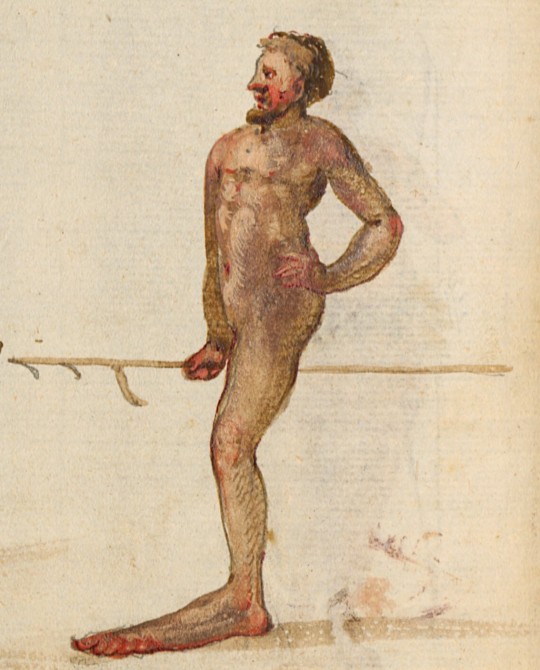
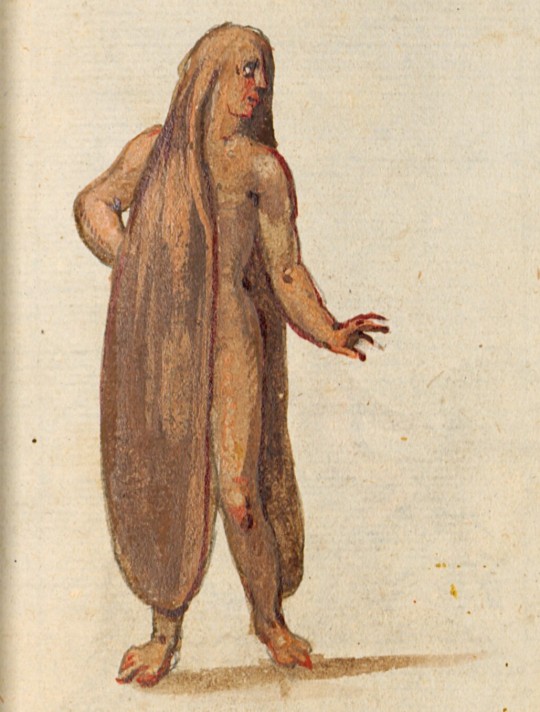
mythical people (blemmyes, monopods, panotii)
in a book of global costumes and conventions, bavaria, late 16th c.
source: Munich, BSB, Cod.icon. 361, fol. 22r and 23v
174 notes
·
View notes
Text
16th c. Costume Books, a Problematic Source for Dress History

But did they really dress like this?
Costume books and costume albums are a popular source for dress historians, historical costumers, and reenactors researching 16th and early 17th c. Europe. There are good reasons for this. They are primary source documents (at least sometimes), and they show the clothing of cultures and social groups that are difficult-to-impossible to find in other types of period art, like the Irish and rural peasants. Examples of these books include Trachtenbuch des Christoph Weiditz, Habiti antichi et moderni di tutto il Mondo di Cesare Vecellio, and Théâtre de tous les peuples et nations de la terre avec leurs habits et ornemens divers. These books are, however, deeply problematic as a dress history source for several reasons. In this post, I will discuss the ways they are problematic and how those of us researching historical dress can gain a better understanding of what the people shown in these books were actually wearing. I have broken down the problems with using these images into 4 areas.
Embodied biases:
The creators of these books were, at least sometimes, prejudiced against the cultures they were portraying, and these biases may have affected how they characterized these cultures. Hans Weigel, author of Habitus praecipuorum populorum, characterized his native German fashion as modest and virtuous and characterized elaborate Italian fashions as decadent and corrupt. Weigel considered these 'strange' foreign fashions a threat to the 'civilized' German fashion he favored (Bond 2018). This bias might have motivated Weigel to idealize his portrayal of German fashion or to exaggerate the strangeness of Italian fashion in order to scare his readers away from trying it.
Weigel's dislike of flashy foreign fashions seems mild in comparison to the bigotry of some of his peers. Flemish artist Lucas de Heere and French artist François Desprez both labeled the Scottish 'savages' in their books. Jost Amman's description of a purported Turkish sex worker in the German edition of Gynaeceum, sive Theatrum mulierum, is appallingly bigoted:
"A Turkish Wh*re: This is a prostitute, who sells her impure body for dirty money to a lover that pleases her. With the earnings of this sin she dresses herself prettily and beautifully, in order to attract the Turks even more easily with her false ornaments." (translation from Ilg 2004)
Considering the blatant bigotry he shows here, I wouldn't anything about trust Amman's depictions of sex workers, Turks, or any other non-Western Europeans. Or any other women, really.
Sights unseen:
Even when costume book creators weren't actively trying to perpetuate their biases through their work, their ignorance could still cause problems. These artists did not always visit the countries whose costumes they painted. They relied on other artists' work or even just verbal descriptions to fill in the gaps in their knowledge. The resulting images can distort the cut, construction, and material of the clothing.
For example, the Turkish women in this original woodcut by Pieter Coecke van Aelst are wearing shawls or scarves with long fringe wrapped around their heads and shoulders. In the Christoph von Sternsee costume album's illustration based off Coecke van Aelst's print, the fringed shawl has become a strange, tailored hood with a panel of pleated cloth attached to either it or the gown below.
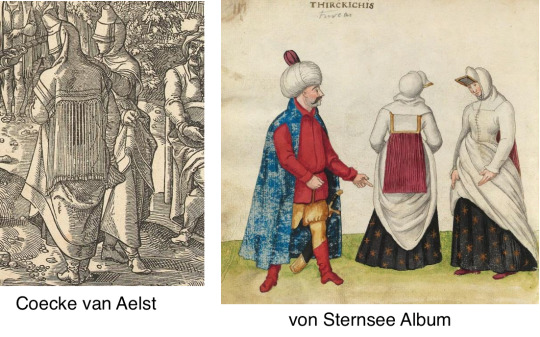
(Coecke van Aelst's woodcuts were identified as the source for the von Sternsee album's illustration in Katherine Bond's 2018 dissertation.)
Copy of a copy of what?
In spite of the problems it causes, copying from other artists' work was common in costume albums (Bond 2018). Considering that the artists did not visit all the cultures they illustrated, this is unsurprising. Some images were copied repeatedly, and the artist misunderstanding the source material wasn't the only source of distortion. Artists also made up details to compensate for bare-bones source material.
This simple line black-and-white print of an Irish woman wearing a léine (linen tunic), brat (Irish mantle), and headwear was used by several artists, all of whom made changes and additions. The first copy in this post is the most faithful to the original, but it still adds long sleeves and eyelet holes on the neckline to the léine. The coloring of the headwear suggests a wool hat crested with a tuft of horsehair and having a linen roll at the bottom. The coloring also gives the brat a contrasting lining.
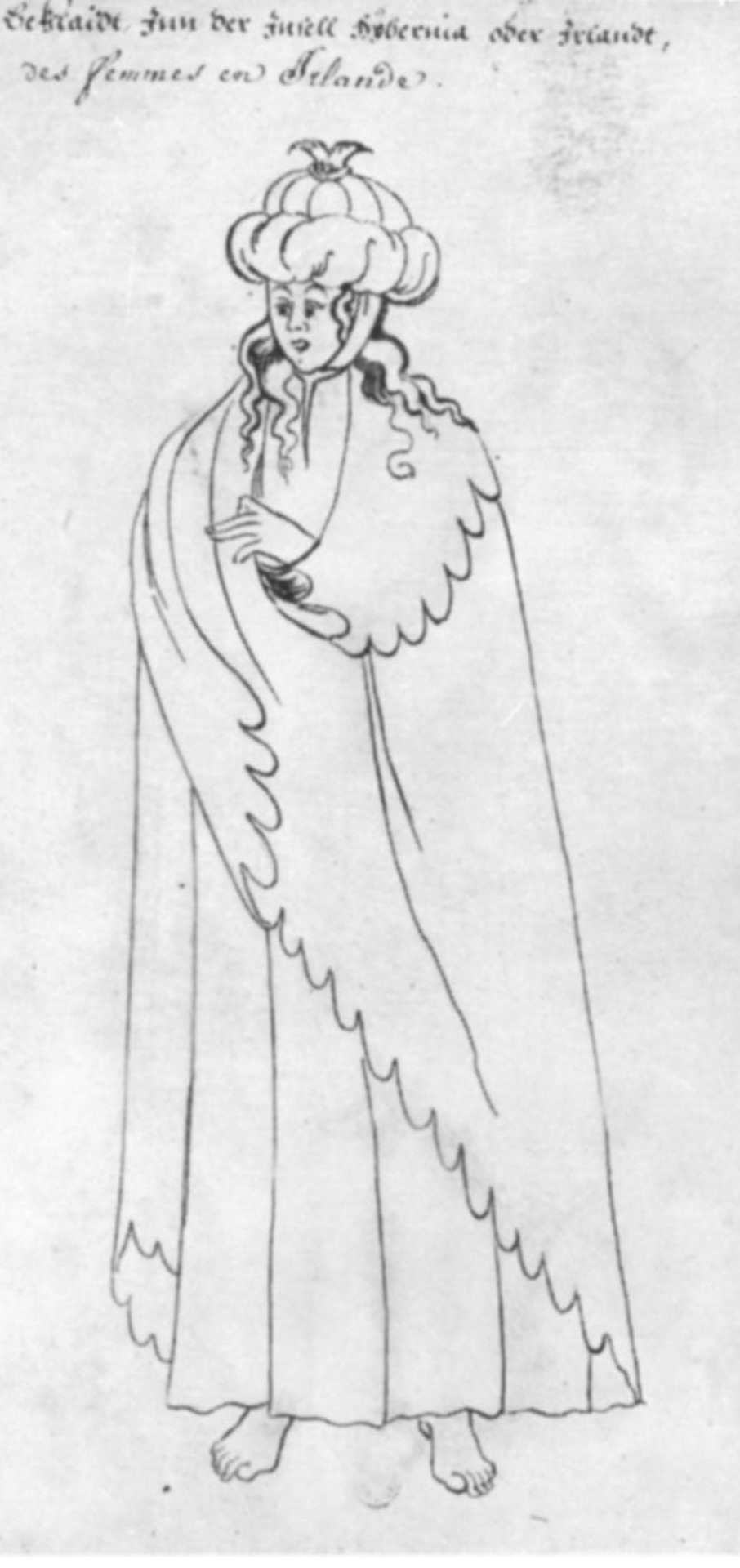

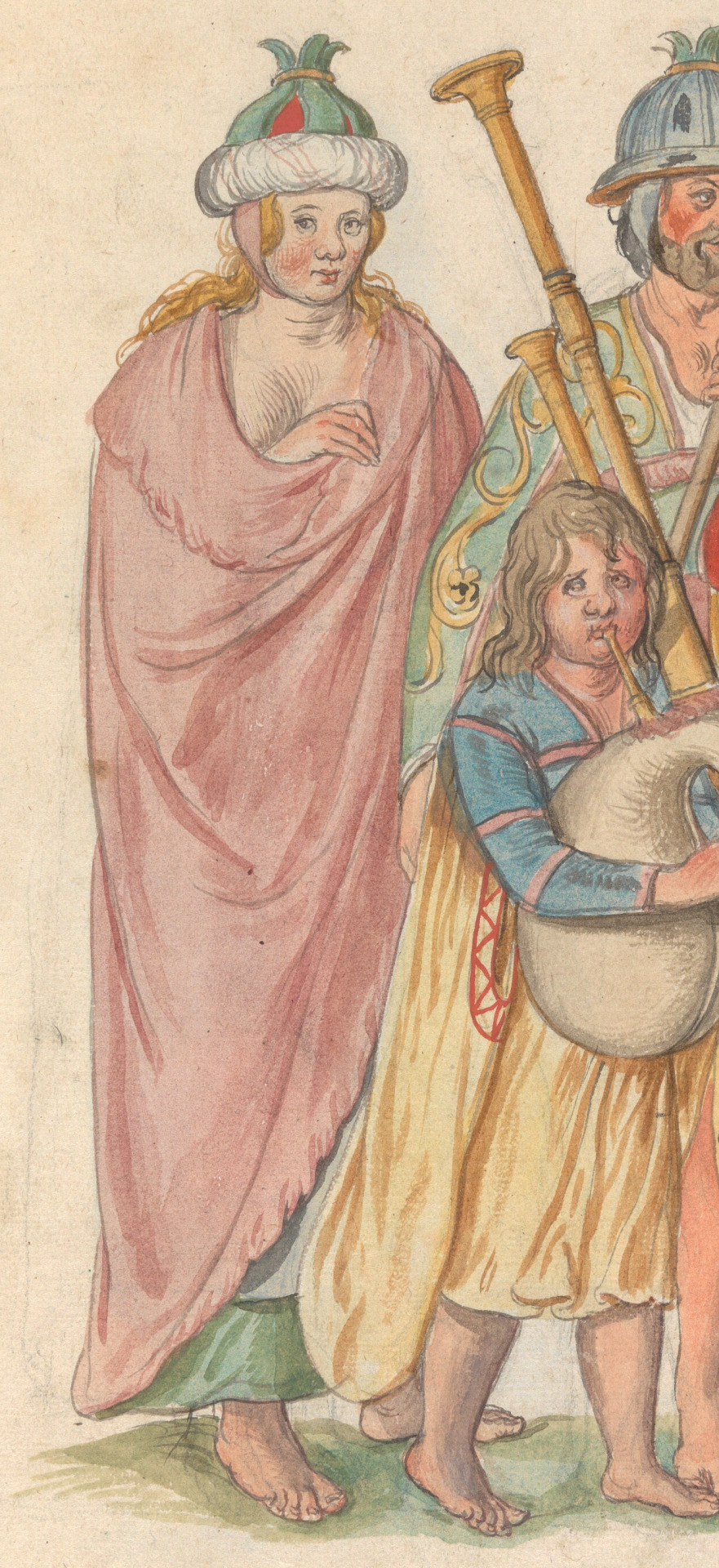

The second knockoff is the most famous. It comes from Lucas De Heere's illustration which purportedly shows Irish people in service to King Henry VIII. This is some thing De Heere couldn't have actually seen, as he moved to England 20 years after Henry VIII died and never went to Ireland at all. De Heere took the most liberties with his version. His Irish woman appears to be topless under her brat. The bottom of her léine has much less volume than the original, and De Heere has added an apron. For the hat, De Heere has replaced the crest with triangles of green wool.
Unlike De Heere's version, the final version is mostly loyal to the cut shown in the original, but it makes some unlikely suggestions for the materials. The léine appears to be green silk brocade. The brat also appears to be silk. Accounts from people who actually went to Ireland in the 16th and early 17th centuries state that these garments were made of linen and wool, respectively. Both the hat and its crest are now completely made of linen.
Chronological distortion:
The heavy use of copying in costume books also has the potential to mislead us in terms of when these fashions were worn, because the original images may be significantly older than publication year of the books that copy them. For example, the dress of Livonian women shown in Hans Weigel's 1577 book was almost certainly copied from Albrecht Dürer's 1521 watercolors. Weigel used references that were more than half a century old, but described them as if they were contemporary fashion in 1577.
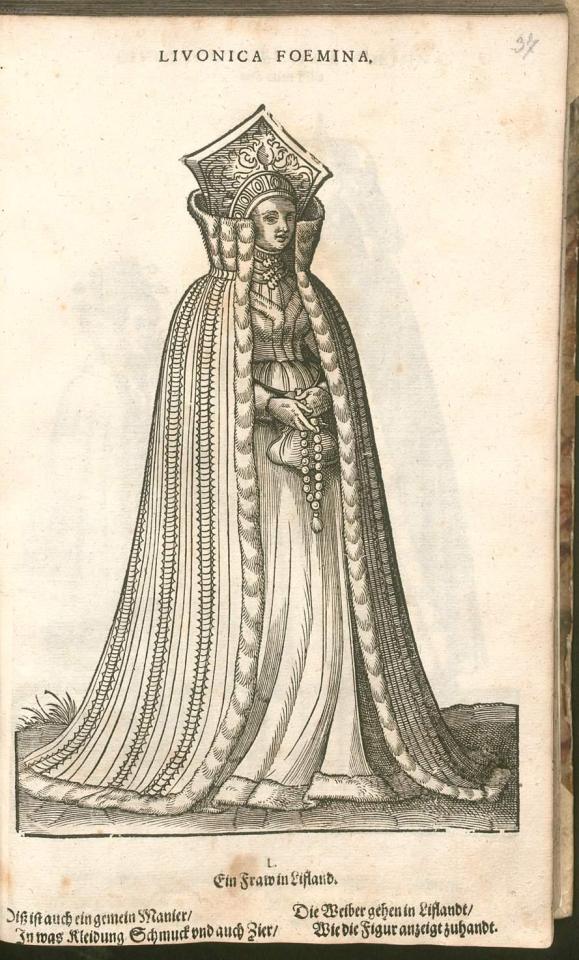
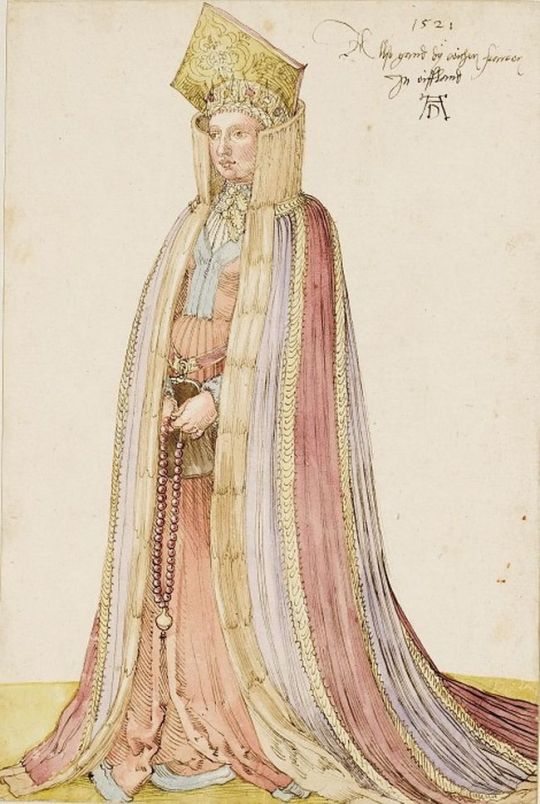
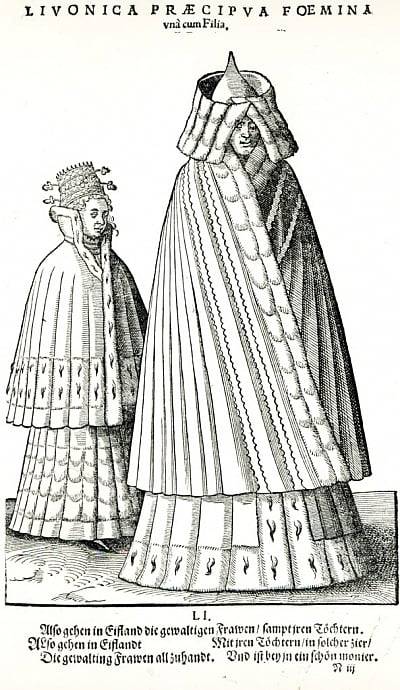
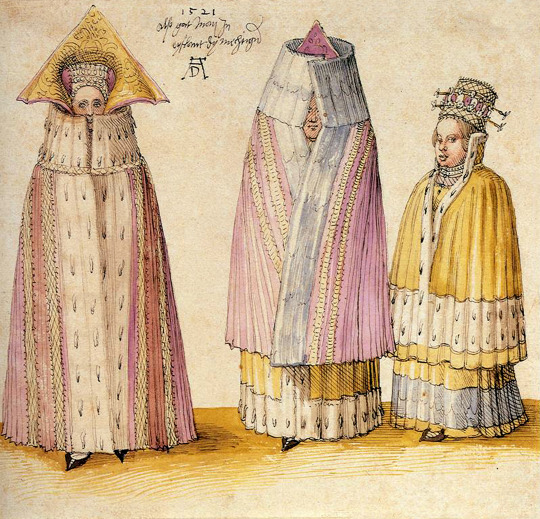
Even when costume book images are accurate portrayals of their source material, many of them lack the detail needed to identify seams, fabric types, or garment understructures. How do we deal with these problems when attempting to reconstruct what the people shown in these books actually wore?
What do we do about it?
I am not saying that we should discard these things completely as sources. Dress historians as respected as Patterns of Fashion author Janet Arnold and The Tudor Tailor authors Jane Malcolm and Ninya Mikhaila have used costume book illustrations. I definitely know less about 16th c. dress history than Jane and Ninya. I am just saying we shouldn't use them uncritically.
First, do some research on the costume book you're looking at. When was it created? Do the illustrations look suspiciously similar to those in other books? (Google image search and pinterest can be helpful for identifying this.) Did the creator, like Hans Weigel, have a particular bias they were advancing? Did they actually visit the cultures they portrayed? Christoph Weiditz actually traveled quite a bit, but he did not visit the British Isles, so his Irish and English women are probably based on someone else's art (Bond 2018). A lot of the scholarly publications about costume books are frustratingly paywalled, but some of them can be accessed for free via researchgate or academia.edu.
Avoid using copies when possible, even if the copies are more realistic-looking or more detailed art. As I discussed in the examples above, artists change things when they copy. Publication dates of copies can also be misleading in terms of dating clothing styles.
Find other sources such as: written descriptions from the time period, extant historical garments, more detailed art depicting similar fashions in related cultures, and art made by people from the culture you are studying. Period written descriptions can yield information about materials used, colors, and other details. Extant garments are your best source for information on cut and construction (unless you are lucky enough to have an extant tailor's manual from your period and culture). Detailed art depicting similar fashions can offer suggestions to fill in for missing information on construction, materials, and embellishments. Art created by the culture is valuable for identifying inaccuracies created by bigoted or ignorant artists.
Finally, remember that it's okay to not know everything. There are gaps in our knowledge about what people wore 500 years ago that will probably never be filled without a time machine. Sometimes you just have to make a plausible guess and move on. Don't let yourself get so paralyzed by doing research that you never complete the garment reconstruction/art/tumblr post you were doing the research for.
Bibliography:
Bond, K. L. (2018). Costume Albums in Charles V’s Habsburg Empire (1528-1549). https://doi.org/10.17863/CAM.25054
Dunlevy, Mairead (1989). Dress in Ireland. B. T. Batsford LTD, London.
Ilg, Ulrike. (2004). The Cultural Significance of Costume Books Sixteenth-Century Europe. In Catherine Richardson (ed.), Clothing Culture, 1350-1650 (p. 29-47). Ashgate.
McClintock, H. F. (1943). Old Irish and Highland Dress. Dundalgan Press, Dundalk.
McClintock, H. F. (1953). Some Hitherto Unpublished Pictures of Sixteenth Century Irish People, and the Costumes Appearing in Them. The Journal of the Royal Society of Antiquaries of Ireland, 83(2), 150-155. https://www.jstor.org/stable/25510871
Costume Books mentioned:
Amman, Jost. Gynaeceum, sive Theatrum mulierum.
The Costume Album of Christoph von Sternsee. not available on-line. Katherine Bond's research is your best source for this one.
Desprez, François. Recueil de la diversité des habits.
De Heere, Lucas. Corte Beschryvinghe van Engheland, Schotland, ende Irland.
Théâtre de tous les peuples et nations de la terre avec leurs habits et ornemens divers, tant anciens que modernes, diligemment depeints au naturel par Luc Dheere peintre et sculpteur Gantois.
Vecellio, Cesare, and Gratilianus, Sulstatius. Habiti antichi et moderni di tutto il Mondo di Cesare Vecellio.
Trachtenbuch des Christoph Weiditz
Weigel, Hans, and Amman, Jost. Habitus praecipuorum populorum, tam virorum quam foeminarum singulari arte depicti.
Kostüme der Männer und Frauen in Augsburg und Nürnberg, Deutschland, Europa, Orient und Afrika
Kostüme und Sittenbilder des 16. Jahrhunderts aus West- und Osteuropa, Orient, der Neuen Welt und Afrika
costume prints by an unknown artist, in the Bibliothèque nationale de France, Cabinet des Estampes. I cannot find this one online. image taken from McClintock 1953.
#dress history#historical fashion#art#16th century#17th century#historical costuming#historical dress#cw whorephobia#cw racism#irish dress#leine#irish mantle#reenactment#costume album
195 notes
·
View notes
Text
🚨TEAM BLACK TRAILER & SPOILERS FOR HOTD🚨
Oh… MY…. GOD. This is literally all I could have asked for this is one of the best things I’ve seen in so long I’m so HYPED!!

This shot… I’m literally heart broken this 💔. This is obviously at Lucerys funeral and honestly it’s just…. TO MUCH. The tears in Jaces eyes, them burning Luke’s clothing because there wasn’t a body, baby Joffrey. This scene looks absolutely stunning but also so gut wrenching. I FEEL LIKE ILL DEFINITELY CRY 😭.
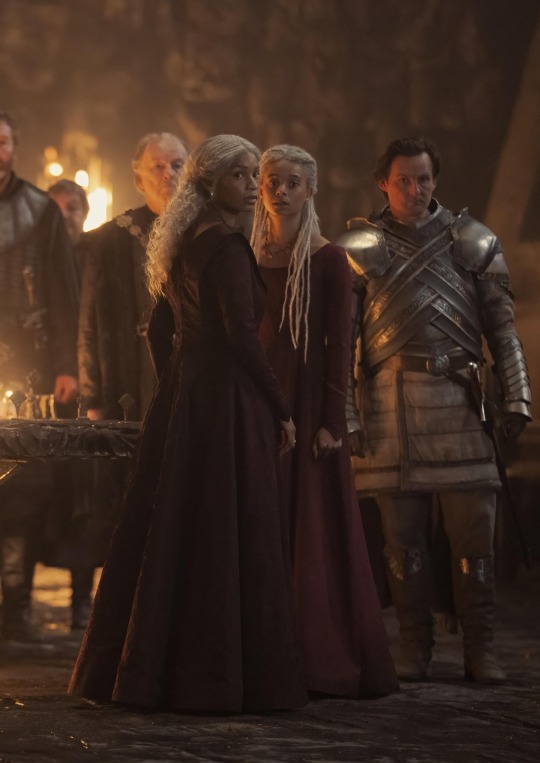
DRAGON TWINS DRAGON TWINS DRAGON TWINS DRAGON TWINS
Everyone knows that I manifested this, HARD. Whoever gave them a new, better wig bless you. To the person who actually put them into nice clothing, BLESS YOU TOO.
Baela is literally Laenas twin like… SHE LOOKS SO GOOD.
I’m so happy there finally getting more scenes and lines, I was praying for this. DRAGON TWINSSSS I LOVE YOUUUU
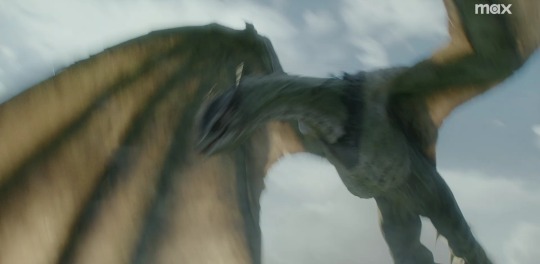
MOOOONNNNN DANCERRRREEEEEEREE
She looks almost exactly like what I imagine a young Vhagar would look like. VHAGER IS HER MUMMY CONFIRMED!!!
It’s hard to see in this particular shot but I do like that they kept her a paler green colouring!!!! I don’t think you guys understand how much I love moondancer. She like two moments in the book and I decided I would Stan forever.

BAELA TARGARYENNNNNNNN GETTING her own moment is something I am actually so hyped about, THATS MY WARRIOR PRINCESS.
You know I have a feeling that maybe after Rooks Rest and seeing what happens to a certain someone she mayyyyy cut her hair, like book Baela. Kind of like the thing, hair holds memories yk?

Cregan stark is NOT BLONDE WHO CHEEEEREEEEEDDDDDDDDDDD
I understand that the north storyline this season will probably only last three episodes max (damn you eight episodes)! NONETHELESS, I am beyond excited.
Can we talk about how Jacaerys is free from the ugly wig??? THANK THE HEAVENS!! There doing my boy right. Seeing him a decent amount in the trailer made me so hyped, I always thought he deserved to be seen more in the first season since YK, he’s the Heir’s heir (hahah) but I’m so glad there stepping up there game this season!!!
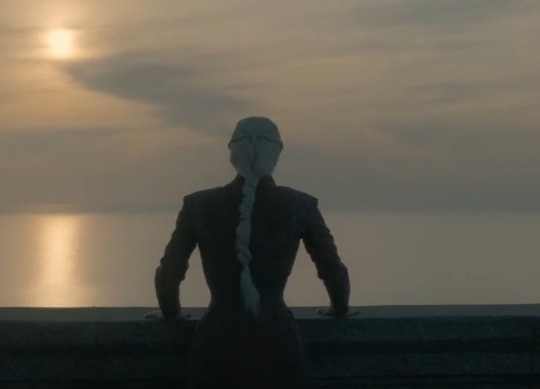
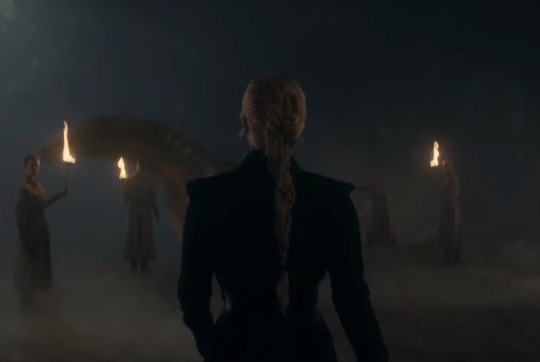
RHAENYRA RHAENYRA THE WOMAN YOU ARE! Whoever made her costumes and hair this season BLESS YOUR HEART.
I think it’s obvious she’s most likely wearing a Visenya braid and she is STANDING ON BUSINESS!
Before when I was talking about the posters I was discussing how it seemed that they gave her back her cunningness and determination from the books and I am SO HAPPY THEY DID. Because THAT is a queen of he seven kingdoms THATTTTTT is MY WOMANNNNN!!!!
Also this is a side note: but I like how she refers to Aegon as Alicent Hightower’s son, not her brother or half brother but as ALICENTS SON!!!! I feel like it probably has to do with them not being close, but it also it makes it feel like Rhaenyra doesn’t consider him a true son of Viserys. Very interesting, can’t wait for there beef to get more intense.

Rhaenyra… Rhaenyraaaas EMMA D’ARCY YOU ARE AN ABSOLUTELY GORGEOUS PERSON. I’m in shock, whoever made there outfits this season did they GOOOOOODDDDDD
LOTS of theories on who’s she’s looking 🙉
1. Alicent Hightower
There was a bunch of leaks going around that there would be a final meeting between the two. I think this is an outfit that she wears in the earlier episodes so idkkk buttt If it Rhaenyra why are you looking at her like that… TOXIC YURI CONTINUES.
2. Mysaria
I feel it being Mysaria would be very interesting. Maybe it’s her pleading ‘loyalty’ towards Rhaenyra. And then later on (if there keeping it like how it is in the books) helping Daemon blah B&C.
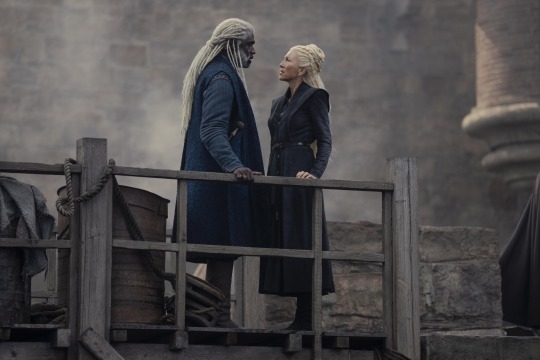
This is Corlys definitely telling Rhaenys not to get involved and Rhaenys telling him she has to do what’s right for her house and what’s right for Baela and Rhaena 💔💔💔
THERE GOING TO BREAK UP MY HEART THIS SEASON.
Anyways guys I’m so excited, I’m so happy that there finally giving team blacks kids moments to shine and also letting Rhaenyra be book Rhaenyra… JUNE 16th can’t come sooner!
#asoiaf#game of thrones#house of the dragon#a song of ice and fire#hotd#house targaryen#valyrianscrolls#rhaena (daughter of daemon) targaryen#rhaena of pentos#baela and rhaena#baela targaryen#rhaenyra#rhaenyra targaryen#jacaerys targaryen#jacaerys velaryon#cregan stark#corlys velaryon#rhaenys targaryen#rhaenys the queen who never was#team black#lucerys velaryon#moondancer#hotd trailer#hotd season 2
38 notes
·
View notes
Photo

I was so taken by those stairs that Jay-Works submitted this morning, that I just felt that the house was something special. Never have I been attracted to any other death stairs. Coincidentally, I was browsing thru one of my favorite online mag’s this afternoon, “The Wealden Times,” and lo and behold, there it was!

Alistair Hendy, the owner, is a chef, writer and photographer. After five years of painstaking restoration he has succeeded in returning his 16th century merchant’s house in Hastings Old Town, UK, to its pared-back Tudor glory.
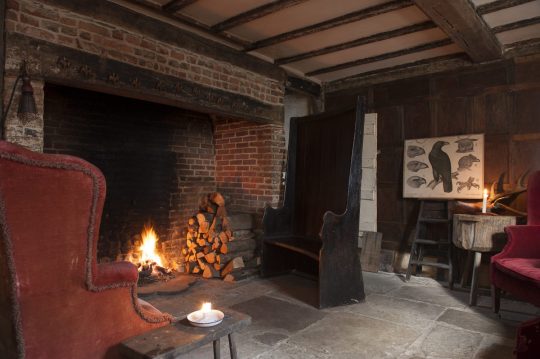
He calls it the Christmas House b/c he opens it to the public in December. Entering the house straight into the drawing room, its sizeable inglenook, stone floor and wood paneled walls stand out.

Alastair brought his log store inside, so there’s a plentiful supply of bone-dry logs to stoke the open fires.

In rooms where candle light isn’t enough, he installed simple lighting in the form of adjustable pendants.

The shutters are rarely open b/c Alastair doesn’t like to see the modern street. Sunlight illuminates wisps of smoke that swirl from the open fires.

After peeling back centuries of updating, it has a pared down, utilitarian look and even the fixtures and fittings look as they might have when they were first installed.

Previous owners actually did more harm than good, modernizing in a pedestrian and thoughtless way, adding carpets and curtains and other urbane fixtures and fripperies. “It’s been more of a re-creation than a restoration project,” says Alastair.
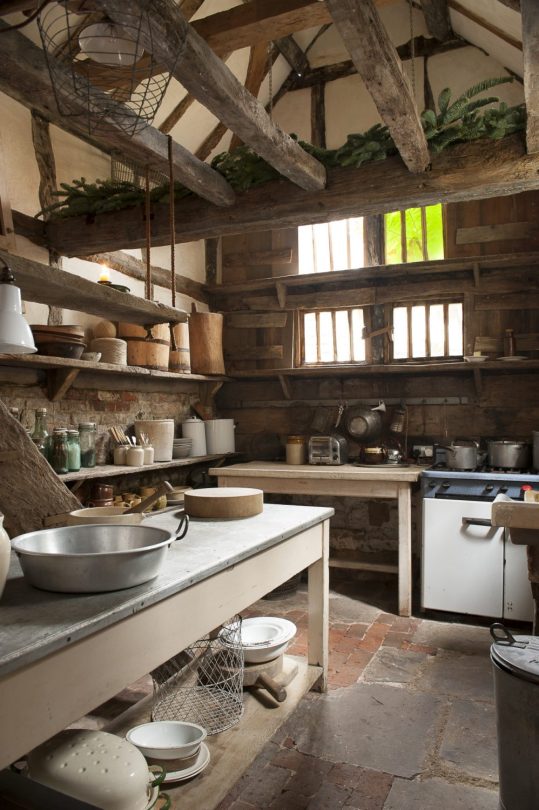
Mod cons like plumbing and lighting are cunningly concealed out of sight in the rest of the house, but hints of modern-day living and appliances can be seen in the kitchen.
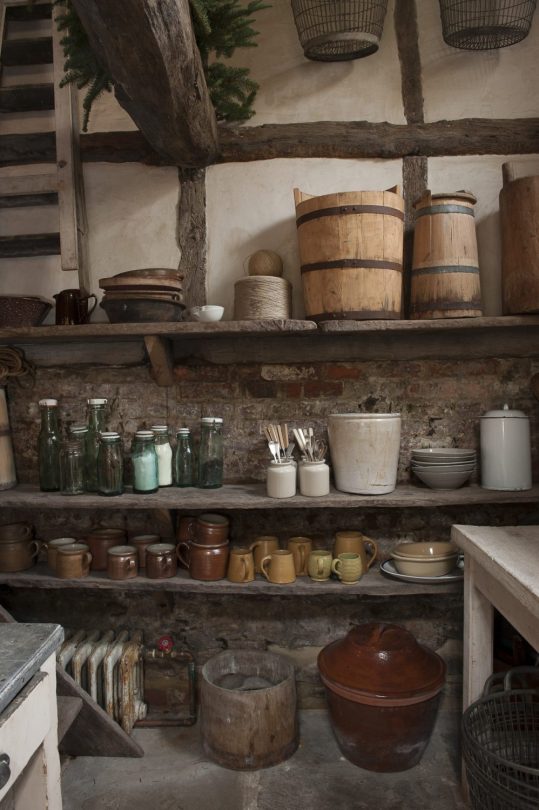
Alastair’s remarkable and imaginative conversion of the kitchen area, which was once a little tv room.
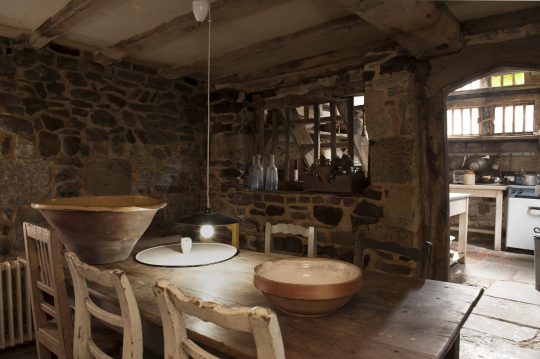
Alastair is also trained in theater and costume design so all the additions are meticulously executed, like the set of an elaborate production.
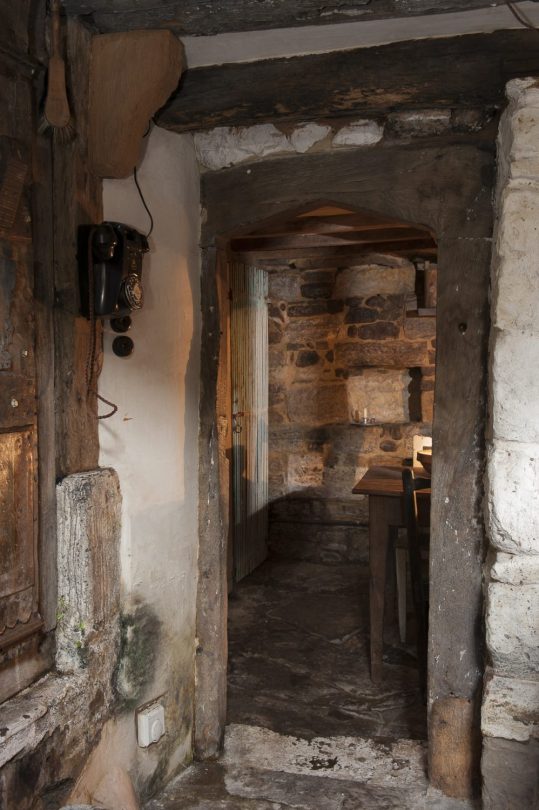
You can see where the floor has been lowered and the ‘new’ stair carefully slotted into an original beam.

The kitchen and dining room are situated in the rear wing of the house that was used as a mortuary, right up until the 1950s.
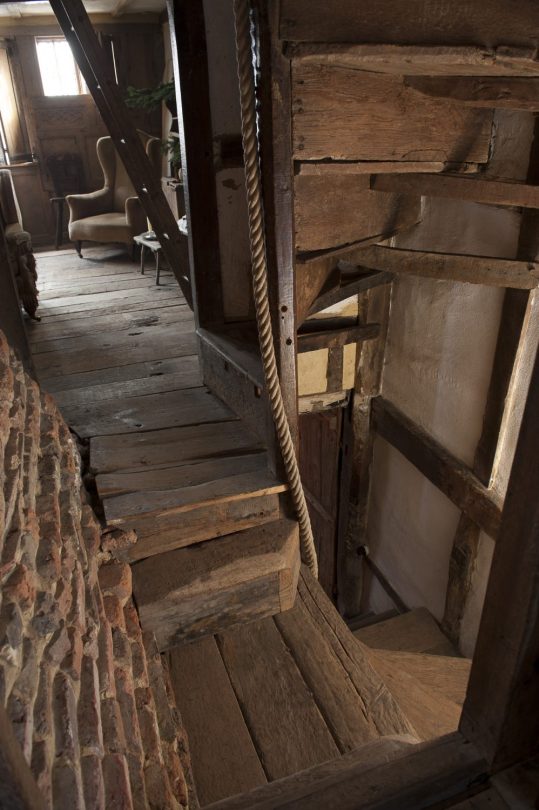
And, here they are- the stairs.

This is the pretty room we glimpsed from the stairs.

Alistair’s vision and hard work have gone into creating a house so interesting and atmospheric that it’s turned into a tourist attraction.
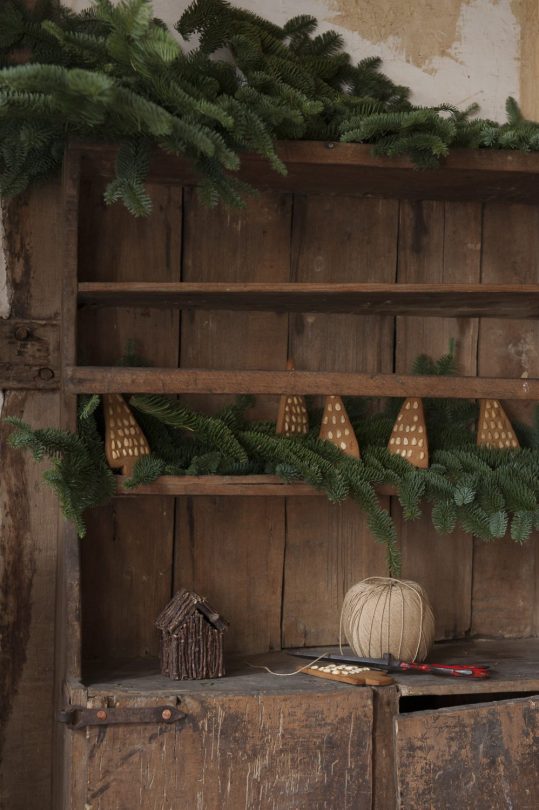
The Xmas decorations are subtle and understated, and also have a European feel.
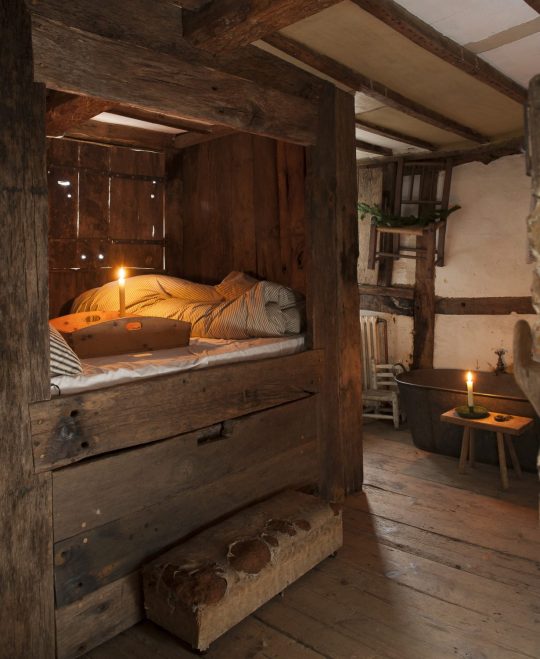
The main bedroom has a raised bed enclosed by wood paneling and shutters.
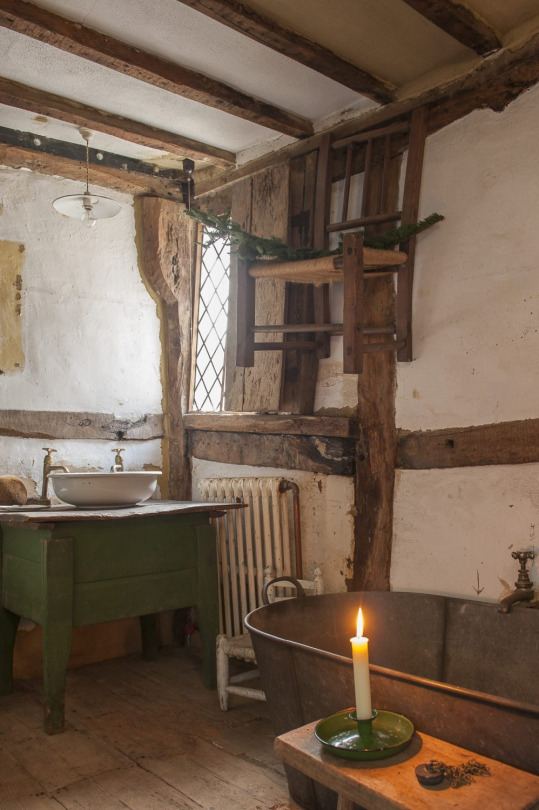
The bathroom furnishings are from many different countries and periods, but they all share the same raw simplicity.
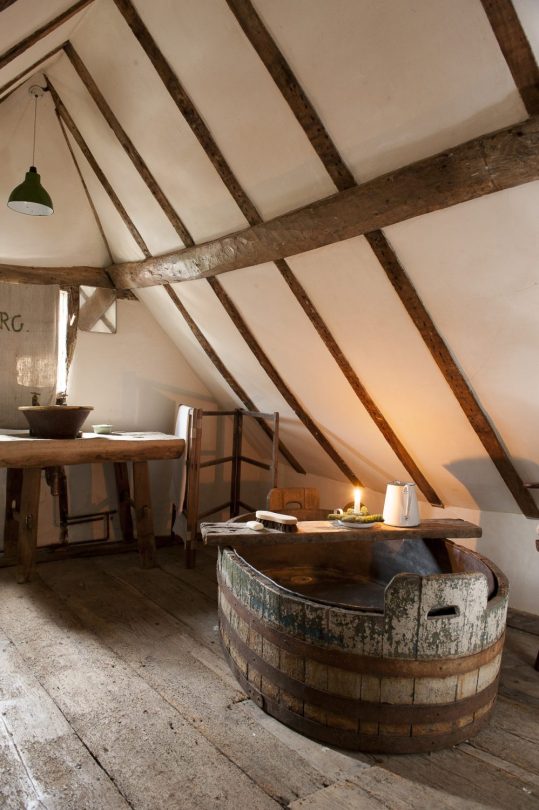
In the attic bathroom, is an original bathtub lined with lead. Its sheer weight meant that the floor had to be reinforced to safely support it.
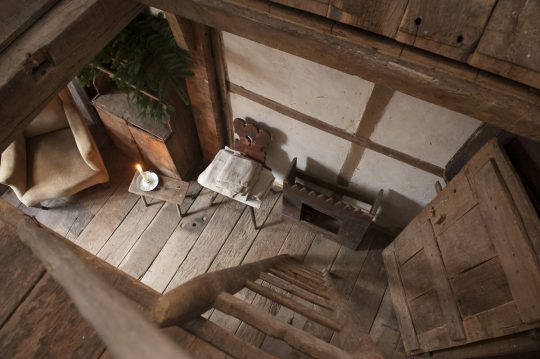
A trap door in attic bedroom floor opens to reveal the room below.
https://priceless-magazines.com/interiors/the-christmas-house/
292 notes
·
View notes
Text
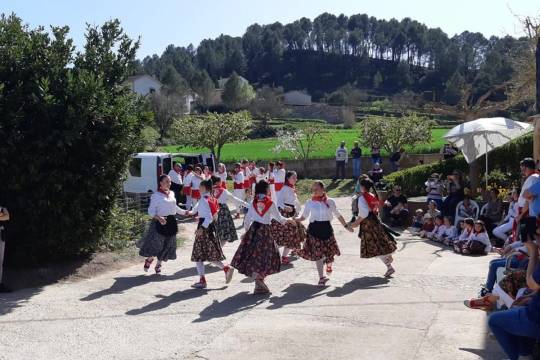

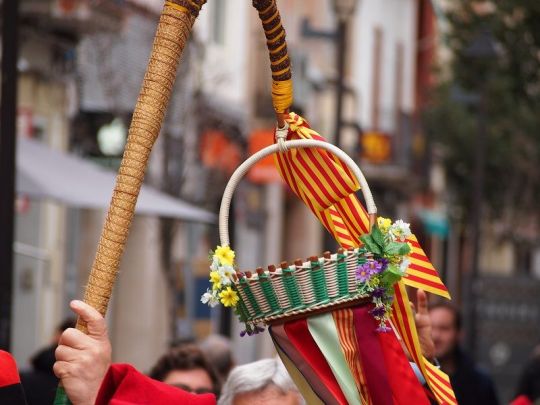
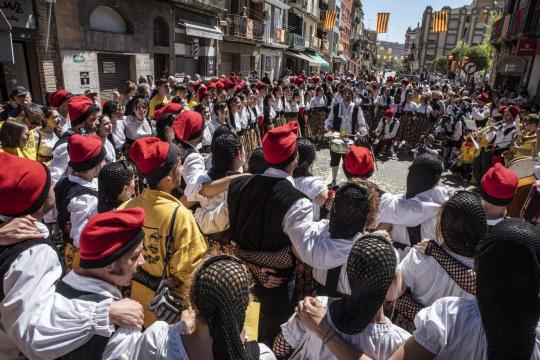



Today, many people in Catalonia and Andorra will be singing caramelles.
The tradition repeats every Easter Saturday in the evening and Easter Sunday in the morning and noon. Groups of people go around the town, house by house, singing songs.
They carry a basket on the top of a wooden stick, so they can raise it to balconies and people can give them something in return. Traditionally, people gave them eggs (for this reason, caramelles are called goig dels ous in Northern Catalonia) and/or money so at the end of th day they could make a communal meal all together. Nowadays, some towns keep the eggs tradition while many others give food, sweets and money. (In my town, the children's groups save the money to go to the amusement park Tibidabo all together).
In some areas, the caramelles singers also dance some local traditional dances between songs.
It's unknown when the tradition started, but written documents from the 16th century already mention it in rural Catalonia.
Photos in this post: from Sant Salvador de Guardiola (by GMV), Sant Cugat del Vallès (by C. Caballé), Súria (by Òscar Bayona), Sant Cebrià de Rosselló (by Le Temps du Costume Roussillonais) and Sitges (by Vinyet Panyella).
#caramelles#tradicions#catalunya#catalunya nord#sant salvador de guardiola#sant cugat del vallès#súria#sant cebrià de rosselló#sitges#goig dels ous#traditions#culture#cultures#easter#pasqua#ethnography#choir#catalonia
102 notes
·
View notes
Text
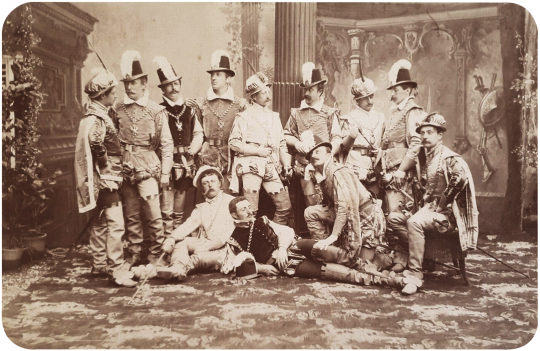
Albumen print of a group of 19th century men dressed in 16th century costume, c. 1890s
#special shout-out to reclining man in front#and his buddy deep in thought innocently regarding the ceiling surely unaware where his other hand is resting ;)#not sure if they're going for 16th or 17th century actually; the very short breeches suggest 16thc but the boots look 17thc to me?#but I'm not very familiar with either era#and who could blame these guys for taking a bit of creative liberty in order to rock thigh highs and cute little pumpkin shorts#19th century#1800s#1890s#19th century fashion#historical fashion#historical costuming#men's fashion#fashion history#19th century photography#albumen print#fancy dress ball#is what I'm assuming as they seem more homogeneously costumed and casually posed than I'd expect of a theater group#as always refer solely to seller's pics if deciding to buy—I've sharpened image adjusted contrast and cropped for tumblr
65 notes
·
View notes
Text
Theory: Is the Darmstadt Madonna
Long story short, while writing other adjacent Galadriel meta, I randomly found this: the Darmstadt Madonna (scroll down).
A 16th century painting of an aristocratic couple humbled before the Virgin Mary and baby Jesus. I saw dots begging for connection.
I think the wife, Magdalena Baer, was the inspiration for young Galadriel's dress, as it's strikingly similar (see collage below). .
Combined with Tolkien's parallels between the last version of Galadriel and St. Mary.
Plus Magdalena Baer's positioning to the Virgin Mary in the painting is too-coincidental-to-ignore.
Moreover, the RoP costume designer has similar precedence with Queen Regent Miriel.
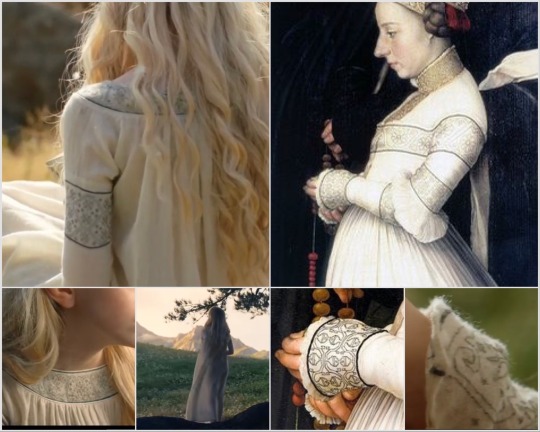
(Top right) Magdalena Baer
Similar dress style and signifiers
Although Magdalena’s dress is more sophisticated than Galadriel's in construction, both are voluminous (likely) white linen and embellished with blackwork — historically emblematic of high status, as fine embroidery takes time and skill.
Here’s where they differ: the sheerness of Galadriel’s dress tells us it’s in fact a chemise — a garment to be worn beneath a top outer layer (see images below). While apparently appropriate for an Elf child to wear alone, it's too risqué for an adult woman.
And in contrast, Magdalena’s blackwork is adorning the top layer. It's similar to an early medieval-styled (slim-sleeved) chemise.


Galadriel’s white chemise motif
She wears one as a child,
when leaping into the seas,
and within Sauron's freaky little dream sequence.
Each time when darkness is literally and metaphorically before her.
In the opening montage, an adult Galadriel still wears the white chemise of her youth, as she seems to struggle processing "paradise lost." In costume design, white can hold many many meanings and among them: purity, equality, and new beginnings.
Purity in the innocence of childhood, and by extension, of the Eldar before Morgoth’s unchaining and the first kinslaying.

Equality perhaps when Pharazon mocks her alleged illustrious titles while wearing a plain chemise. Lack of status-signaling adornment commutes to visual peasantry.
A potential new beginnings each time she faces Sauron’s proposal / these crossroads.
@klynnvakarian or @penelopeloveshere, have anything to add from a Mormon perspective? I know white robes hold meaning.

Darmstadt Madonna by Hans Holbein c.1526
Magdalena is positioned close to the Virgin Mary — just like Galadriel in Tolkien’s view
Galadriel isn’t strictly speaking an analogy for the Blessed Virgin… but she shares a number of characteristics with Mary. Tolkien considered her the “greatest of elven women,” in the same way we might consider Mary to be the greatest of all saints. She is a queen, a mother, and often appears as a miraculous helper. Sometimes, she is referred to simply referred to as, “The Lady of Light.“ — How J.R.R. Tolkien spoke about the beauty of Mary
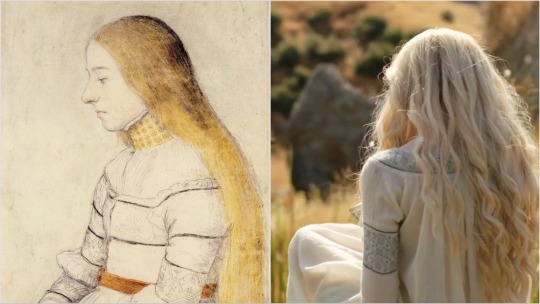
Mere coincidence?
Paintings like the Darmstadt Madonna would take months or even years to complete.
As such, the painter's daughter — a long, golden haired adolescent like young Galadriel — was a stand-in for Magdalena Baer.

RoP’s costume designer has precedence with Miriel
Miriel’s costumes are based on the famous painting Zenobia. Like Miriel, she was a powerful woman acting on behalf of her father. Zenobia was usurped by Emperor Aurelian (“the Golden”) whereas Miriel faces the same by Pharazôn (“the Golden”).
Thank you for reading! Likes and tagged reblogs are appreciated. Feel free to share your thoughts in the comments or DM.
42 notes
·
View notes
Text
getting into historical costume is really fun because youll be looking at something like this (1888)

and ur first thought will be 'wow thats so masc' bc ur thinking of the 16th c. menswear that has become part of ur regular wardrobe somehow
#this is actually p standard for kids clothing up until a lot more recent than ud expect#this same book has several patterns that r neutral or even specifically for boys w similar looks#but sca brain rly has got me like#knee length full skirt is boy clothes#honeslty can reccomend to fellow genderwierd transmascs#something truly fun and delightful abt wearing ur flounciest knee length dress but knowing it literally is menswear#a
12 notes
·
View notes
Note
Hi!
A lot of the time in pictures of the Monkey King, he has a sort of hat with two feathers(?) coming off the top of it. Are they feathers? What is this hat or hairstyle called, and what is the significance of it, do you know?
Thank you
The novel calls Sun Wukong's hat a "purple gold cap with phoenix feathers” (fengchi zijin guan, 鳳翅紫金冠). [1] This kind of head gear is most commonly associated with young heroes in Chinese opera, and it's generally portrayed as a helmet with lingzi (翎子) feathers. According to Bonds (2008):
[F]eather movements enlarge the gestures and emotions of the wearer. For example, rotating the head in circles…expands a sense of anger. Shaking the head back and forth quickly…adds to extreme frustration. Biting crossed feathers in the mouth heightens the appearance of aggressive feelings (p. 44).
But this kind of feathered headgear was once a kind of military regalia. You can see examples from this detail of The Emperor’s Return to the Capital (Rubitu, 入蹕圖), a painting from the 16th-century:

Knowing the above explains why it really, really annoys me to see drawings of the Monkey King with feathers attached to his golden headband or sticking out the top of his head like insect antennae.
That's why I wrote this article about what Sun Wukong looks like:
Note:
1) Yu (Wu & Yu, 2012) translates this as "a cap with erect phoenix plumes, made of red gold" (vol. 1, p. 137).
Sources:
Bonds, A. B. (2008). Beijing Opera Costumes: The Visual Communication of Character and Culture. Honolulu: University of Hawai’i Press.
Wu, C., & Yu, A. C. (2012). The Journey to the West (Vols. 1-4). Chicago, Illinois: University of Chicago Press.
26 notes
·
View notes
Text
April 2024.
This is my first attempt to update my blog in a very long time, so I have forgotten how this all works. This is the smallest of toes dipped in the unknown waters.
My researches into the Napoleonic Wars which I under took to help me produce the prints for 'printsforartssake' rather took over my life and have resulted in six books which I have put on the 'Blurb' website.
The first was British Firearms of the Napoleonic Era, which, being the first had several deficiencies. So I recently rewrote the beginning, added pages and clarified some points. I am not sure if the revised edition is available yet, that depends on the availability of my 'tech support', next time he is down from Edinburgh.
Volume II is British Edged Weapons of the Napoleonic Era.
Volume III. Weapons & Equipment of the Armies of Napoleon.
Volume IV. British Uniforms & Equipment of the Napoleonic Era.
Volume V. Histories & Uniforms of the British Infantry Regiments at Waterloo
Volume VI. Histories & Uniforms of the British Cavalry Regiments at Waterloo.
This is the preface to the sixth book which sums up what I was attempting to do.
'This book began, as all the others, as an attempt to organise what had grown into an almost unmanageable pile of images and information. The original intention was to have to hand a simple but comprehensive pictorial reference work for illustrative purposes but it began to expand as the size of the subject became more apparent and it turned out that there was always more to discover, which was half the fun. It in no way purports to be a work of definitive scholarship and any faults and omissions, such as there are, are completely unintentional. It was compiled from a variety of websites, including auction houses, costume suppliers, re-enactment groups, museums, replica makers, model makers and forums and of course, books. All acknowledgments, where the source can be found, appear on the relevant page.'
I shall now attempt to add a couple of sample illustration.
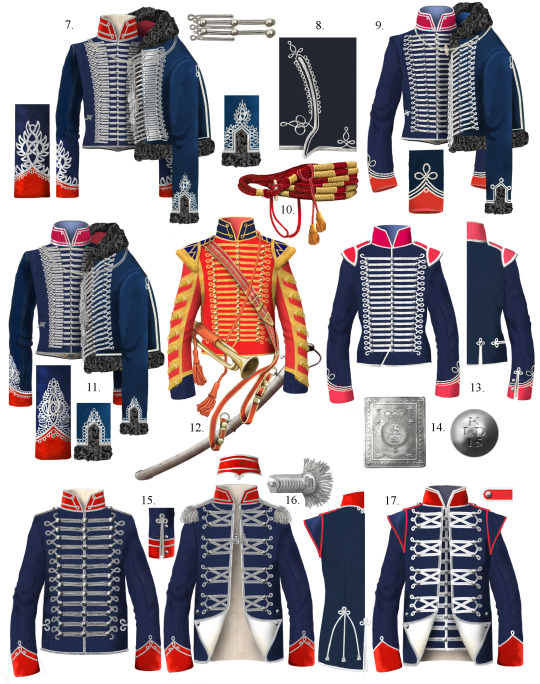
Above uniforms of the 15th Light dragoons. (Vol VI)

Above: A trooper of the 16th Light Dragoons c. 1793 (Vol VI)

Above: An Officer of the 95th Rifles carrying the 1803 Officers Sabre and details of the weapon.
3 notes
·
View notes
Text
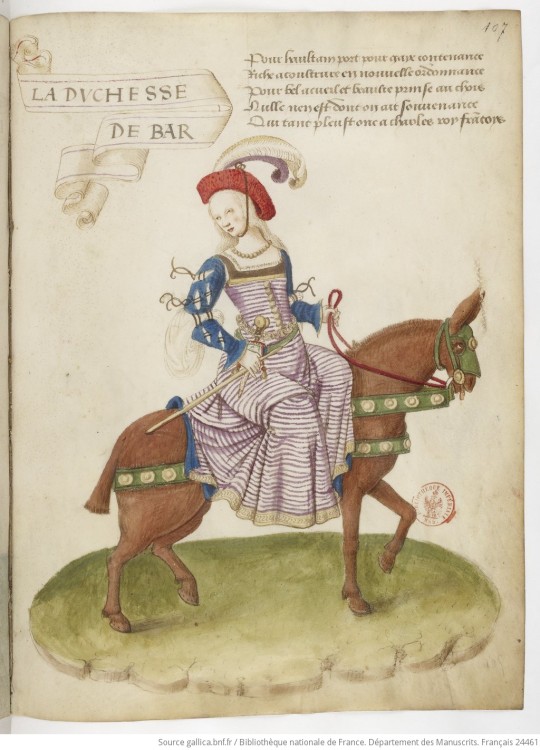


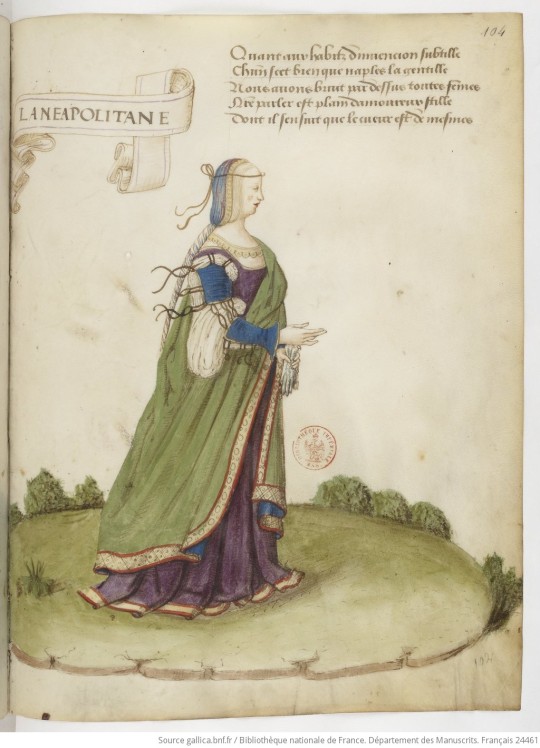


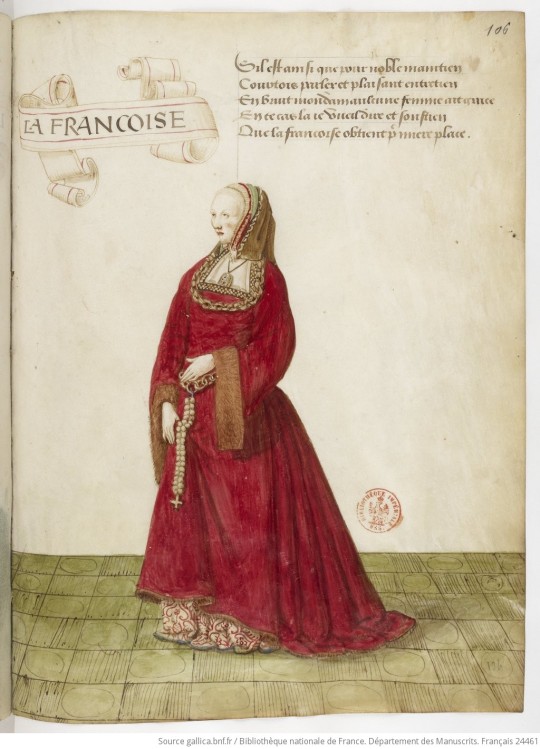


Collection of drawings accompanied by texts, known as Recueil Robertet, 1490-1520 France;
The Duchess of Bar
Women from Lombardy and Venice
Women from Naples and Florence
Women from Germany and France
Green and Yellow; White and Blue
#late 15th century#early 16th century#renaissance#manuscript#illuminated manuscript#illustrated manuscript#16th century#15th century#mdp16th c.#mdp15th c.#France#15th c. France#16th c. France#italy#costume illustration#illustration#15th c. italy#16th c. Italy#costume book#German Style#Germany#15th c. Germany#16th c. Germany#horseback#riding
130 notes
·
View notes
Text
Altered Richard III


I have prior read on webpage of Society of Antiquaries that their portrait of Richard III with broken sword has been altered. But honestly, I had no idea how much. (Because their description has...room for improvement.)
But when I discovered this copy...I started to wonder....
Ok, the proportions are not exact match in the copy...overall size of Richard has been enhanced into somebody with much larger bodyframe...however the differences in outfit and in sword...are very large.
And x-ray proves at least some of them show what was originally beaneat:

Such as the upturned bits of outfit near neck, much larger cuffs.

(some lines got but away from me. especially on right sleeve(from our POV. So take it with pinch of salt. But you get the picture...)
Imo the copy(with green outfit) has actually been created after some alterations already. It's overall side and proportions match well with these orange line on right:


Both red and orange line marks the non-original frames painting was once put into. Which both hid the edges of the painting, and with lack of sunlight, the colours didn't fade as in rest of the background.
We're not really that intrested in the orange line...although clearly the author of the copy did more of the sleeves than it revealed...and imo got inspired by outfit of Henry VII...because no way those cuts looked the shape as in the copy. Hell no.
(And in the copy the proportions are also off with overall frame of Richard, imo they tried to make him resemble Edward IV more, and be larger man...thus huge hands and big head matched with extremely short hands...like T-rex. Idk if nose's raise is meant to be there or not...the painting is certainly overpainted in that area now...but idk if for better or worse...)
But why do I think the orange line is 2nd frame and not first?
Because the copy shows half of the pommel of the sword...not all of it. But...that's not where the pommel originally was.
Idk much about swords, so I am including this to help us all understand what exactly was altered:


The actual round pommel is all the way on bottom of the painting, falling perfectly in line with the blade.
On copy it's straight line, but in painting itself now, the hilt of the sword is bend. Yet it should be straight!

Imo the hilt of sword was shorterned(altered) to fit the newer frame. Because pommel got completely covered, and it'd look weird.
(By the way swords with hilts of this lenght are not unusual as far as know... And idk if it's two-handed sword or not! Ask somebody who works with historical swords.)
But overall in x-ray the sword's blade is much wider, going narrower on top, the hilt is longer, the cross-guard is very simple...and it looks like sword you'd actually take with you on battlefield. Not the overgilded thing it looks like now!
Also the hair in x-ray is much more neath, with nice neath curls,

quite similiar to style of these protraits of Henry VII:
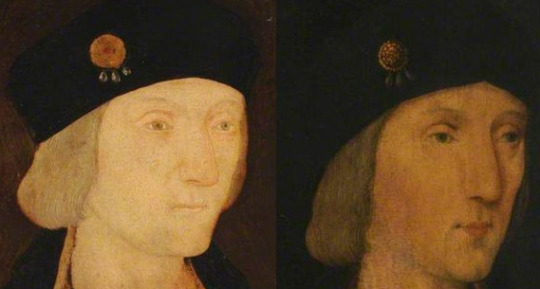
And no, I am not trying to disprove yet another portrait of Richard...
(In my post Mistaken identity I present evidence why I believe most portraits labelled as Richard III are actually Henry VII.)
But I have speculated that these two portraits might belong to earliest stage of Wewyck's workshop. Very early works.
But dendrology of Richard's painting shows baltic oak was cut in c.1515, so Socitey of Antiquaries believes it was created probably in 1520s or later.
But we have good indication that there was previous portrait of Richard, which matched this one at least in some aspects.
There is a figure from 16th Century Tapestry at St Mary’s Guildhall, which is by some believed to depict Richard III(with light hair):

And I agree, there is big resemblence in the face and position of hand...though not in overall outfit.(Idk if costume is accurate, with tapestries sometiems they aren't at all.)

But this tapestry was dated based upon its overall style to c.1510.
It predates the painting. Hence its totally possible it's based upon much earlier painting by early workshop of Meynnart Wewyck...or some other painter, possibly even in Richard's lifetime.
Either way, I'd love for Society of Antiquaries to restore the painting to how it originally looked. Because this truly is only painting where I am certain it is meant to be Richard III and nobody else.
6 notes
·
View notes
Text
Patterning a 16th c. Irish léine sleeve

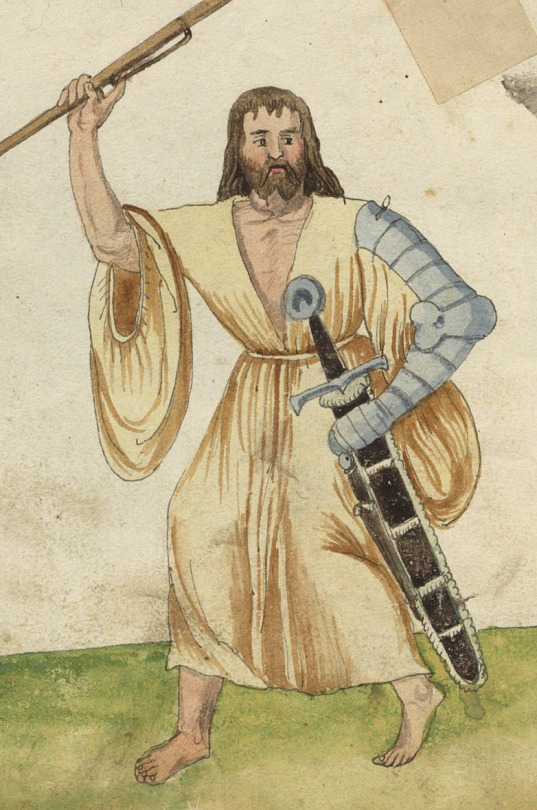
Mid-16th c. images of the léine from "Drawn after the Quick" and Codice de Trajes
The léine of 16th century Ireland had huge, iconic sleeves. Sadly, we have neither surviving examples of this garment, nor detailed period documentation, so we don't know how these sleeves were made. I have seen a couple different sewing patterns purposed, but none of these match the voluminous, gathered sleeves shown in the Codice de Trajes and the costume album of Christoph von Sternsee. This is my attempt to create a sleeve pattern that better matches the surviving evidence.
The cut of léine sleeves probably varied across 16th c. Ireland, potentially impacted by factors like a person's wealth or where in Ireland they lived. It almost certainly changed over time as more of Ireland fell to English colonial conquest. The wearing of the large-sleeved léine was banned by King Henry VIII (McClintock 1943). Lucas de Heere’s circa 1575 illustrations show women with much smaller sleeves than earlier images. However, at least during the early part of the century, sleeves did not vary by gender. According to Laurent Vital, the only difference between a man's léine and a woman's léine was that the woman's had gores in the bottom it make it fuller (Vital 1518).
My goal with this project is to create a léine sleeve pattern for an early to mid-16th c. Irish person living outside of the Pale. Since none of the period images or texts are very detailed, I am combining information from several sources.
Englishman Edmund Campion who visited Ireland in 1569 gave the following derisive description of the léine: “Linnen shirts the rich doe weare for wantonnes and bravery, with wide hanging sleeves playted, thirtie yards are little enough for one of them” (Campion 1571).
Campion’s claim that the sleeves were pleated initially struck me as strange. English and continental European shirts from this period frequently had gathered sleeves (Mikhaila and Malcolm-Davies 2006, Arnold, Tiramani and Levey 2008), but pleating isn’t the same thing as gathering. However, other period writers made similar claims. Writing in 1596, Edmund Spenser mentioned "thicke foulded lynnen shirtes” as a garment worn by the Irish (Spencer 1633).
Similarly, Fynes Moryson described the léine as being made of “thirty or forty ells [of linen] in a shirt all gathered and wrinkled,” elsewhere he described it as “folded in wrinckles” (Moryson 1617).
In The Image of Irelande, John Derricke gave the following description of the léine:
Their shirtes be verie straunge,/ not reachyng paste the thie:/ With pleates on pleates thei pleated are,/ as thicke as pleates maie lye./ Whose sleves hang trailing doune/ almoste unto the Shoe (Derricke 1581)
Assuming that Derricke’s description is not just poetic license, I know of one 16th century construction method that matches the description “pleats on pleats [. . .] as thick as pleats may lie,” and that is cartridge pleating. Cartridge pleating is a technique that is more commonly used on thick fabrics like woolens, because a lot of fabric bulk is needed to keep the pleats standing properly, but extant 16th and early 17th c. neck ruffs use cartridge pleating to join massive lengths of fine linen to a neck band (Arnold, Tiramani and Levey 2008).

Cartridge pleating on a thick woolen fabric
A person unfamiliar with sewing methods and terms might well describe cartridge pleating as looking like folds, gathers, or wrinkles.
The léine sleeve patterns commonly used in modern reconstructions are completely flat, like a Japanese kimono sleeve with rounded corners. (There’s also a version which has a drawstring or gathering running along the top of the sleeve. This is a 20th c. Ren Fair invention which has no historical basis.)
The end-on views of the sleeve openings in the recently-discovered images from Codice de Trajes and the costume album of Christoph von Sternsee clearly show that this is not correct. The rounded shape they show for the sleeve end can only be achieved through gathering.


Archer from the von Sternsee costume album and the O’Brien messenger from The Image of Irelande
The best illustration of a léine in The Image of Irelande, the messenger on plate 7, also provides evidence for a gathered sleeve. The way the fabric drapes in the middle of the sleeve suggests that the sleeve is gathered at both ends. Furthermore, the way the mass of a léine sleeve centers under the wearer’s arm when the wearer holds their arm out straight, like the O’Brien messenger, but hangs down like a trumpet when the wearer lowers their arm, like on von Sternsee’s archer also suggests that the sleeve is a symmetrical shape that is gathered at both ends and not a trumpet shape that is only gathered at the wrist end.
With these elements in mind, I went looking for a pattern which would create the correct shape. I used Jean Hunnisett's 15th c. bagpipe sleeve pattern from Period Costume for Stage and Screen and the sleeve pattern from this 1630s English waistcoat (published in Seventeenth-Century Women’s Dress Patterns) as a starting point.

1630s waistcoat sleeve pattern
I replaced the curved sleeve heads in these patterns with the straight sleeve end and square underarm gusset typical of mid-16th-18th c. shirts, since the léine, like the shirt, is an unfitted linen garment, and because the straight edge is much easier to gather all the way around. I don't have any actual evidence for square gussets in 16th c. Ireland, but this pattern definitely needs an ungathered piece at the underarm. Anyone who is bothered by the lack of evidence can use a triangular gusset like the one on the 15th c. Moy gown instead.
After that, I experimented with mock-ups until I figured out how to get the correct proportions. I don't have any training in patterning or draping, so this took several tries. I used my 1/3 scale ball-jointed doll (24 inches tall) as model, because he required a lot less fabric and sewing. Since this was just a mock-up, I used random linen remnants from my stash, and I didn't bother to finish most of the edges.
Here is the final sleeve with the seams sewn together, but before doing the gathering:

This sleeve, on his right arm, is based on the gathered-wrist cuff version of the léine from Codice de Trajes, the von Sternsee album, and The Image of Irelande.
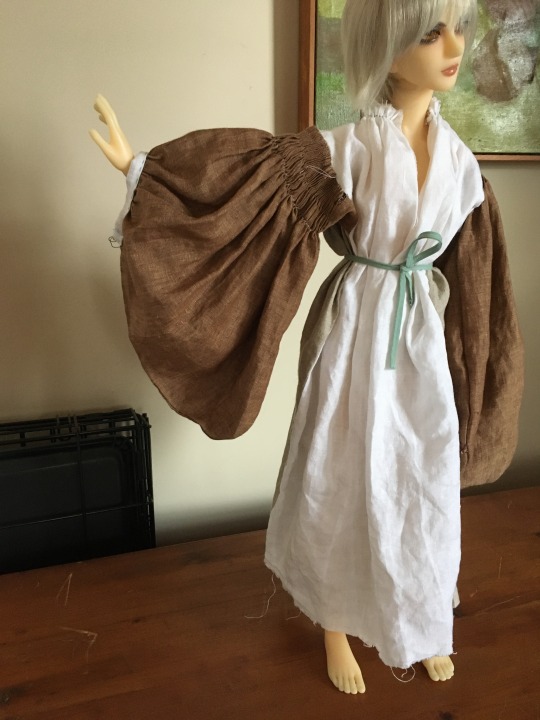


This sleeve ended up with me having to gather 31 inches of fabric into a 5-inch armscye. So yeah, cartridge pleating became necessary, because there is no way to make that kind of reduction work with regular gathering. I also had to do some smocking to get the giant mass of fabric better controlled before I could attach it to the body of the léine.
While this pattern might seem absurd, (it does call for a sleeve end wider than the wear is tall to be pleated into the armscye,) a close examination of John Michael Wright's 1680 portrait of Sir Neil O'Neill shows remarkably similar sleeves.

While this painting is from a century later than my target time period and the clothing clearly shows changes like the addition of English-style shirt sleeve ruffles, the shirt still has elements which I have seen no where else in late 17th c. fashion that are probably derived from earlier Irish dress.
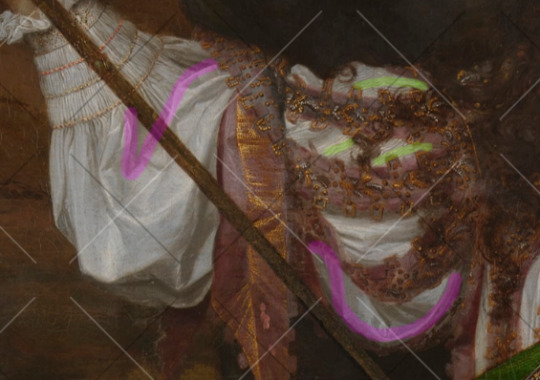
The doublet worn over top prevents it from hanging down properly, but this shirt sleeve has the same bagpipe shape as the 16th c. léine. I have highlighted it in magenta to make this easier to see. The fine, regular folds near the top of the sleeve (highlighted in yellow) are probably the result of smocking or cartridge pleating, indicating that this sleeve, like my purposed pattern, has a large amount of fabric gathered or pleated to the armscye. The wrist end of the sleeve has 3 rows of smocking stitches sewn with silk thread, which shows that the sleeve cuff has a huge amount of fabric gathered into it.
Historically, silk was the thread of choice for smocking, because it is smoother and has greater tensile strength than wool, linen, or cotton. Several 16th c. sources note that the Irish used silk thread when making their léinte (Gresh 2021). Laurent Vital described Irish women as wearing, "chemises with wide sleeves, worked around the collar and in the seams with silk needlework of different colours" (1518). The presence of smocking on O'Neill's shirt combined with my experience trying to recreate this sleeve makes me think that at least some of that 16th c. silk needlework was smocking.
For the left sleeve of my mock-up, I tried to recreate the flatter sleeves from "Drawn After the Quicke". These sleeves do not have a gathered wristband.

This sleeve used basically the same pattern, but the lack of gathering at the wrist opening meant that the whole sleeve was slightly smaller, so I only had to pleat 26 in of fabric into the armscye instead of 31 in. This was just enough of a difference that I could set the sleeve without smocking it first, unlike the right sleeve. I guess this is the more budget-friendly option for your less wealthy kern.

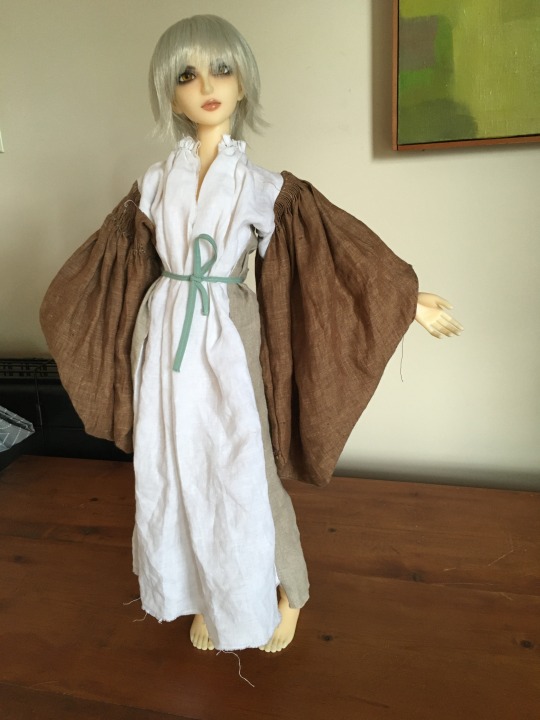
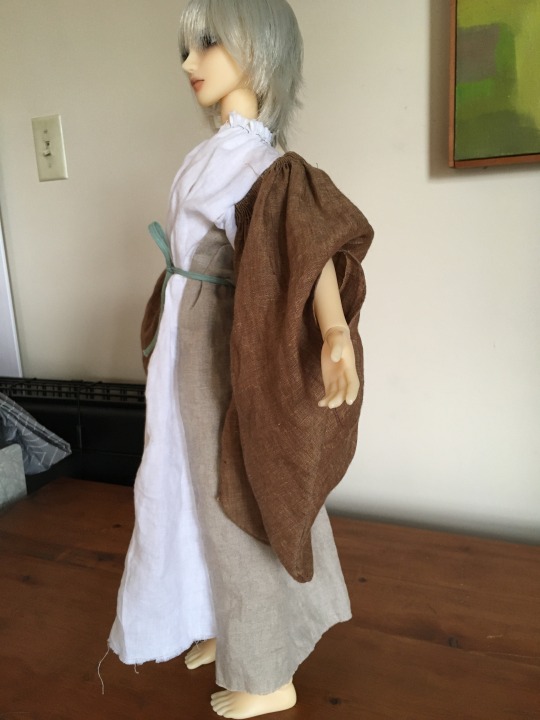
I also made the curve at the bottom of the sleeve wider to give this one a more square shape.
Some of my failed experiments:
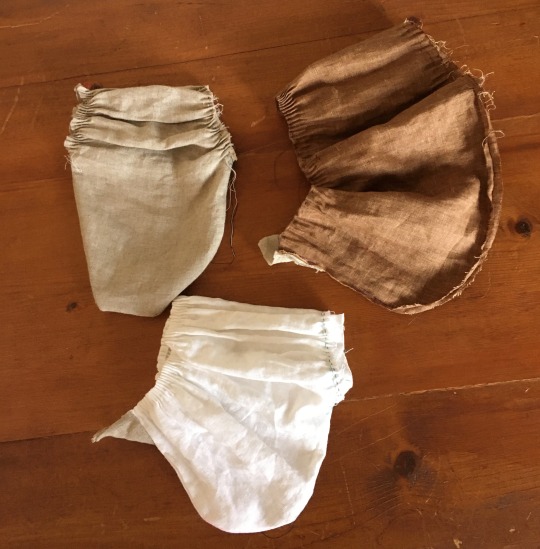
I would like to thank my friend Nikki for loaning me her smocking machine. This project would have been a much bigger pain if I had to do all those gathering stitches by hand.
Since this post has gotten rather long, I am putting the actual drafting instruction for this sleeve pattern in a separate post.
If anyone would like to support my work financially, I now have a ko-fi page.
Bibliography:
Arnold, Janet, Tiramani, J., & Levey, S. (2008). Patterns of Fashion 4. Macmillan, London.
Campion, Edmund. (1571). A Historie of Ireland, Written in the Yeare 1571. Dublin. https://archive.org/details/historieofirelan00campuoft/historieofirelan00campuoft/page/n5/mode/2up
Derricke, John. (1581). The Image of Irelande, with the discoverie of a Woodkarne. John Daie, London. https://archive.org/details/imageofirelandew00derr/page/n29/mode/2up?view=theater
Hunnisett, Jean. (1996). Period Costume for Stage & Screen: Patterns for Women's Dress, Medieval-1500. Players Press, Inc, Studio City.
Gresh, Robert. (2021). The Saffron Shirt, Part 1: Saffron and Silk, Urine and Grease. Wilde Irish. https://www.wildeirishe.com/post/the-saffron-shirt-part-1-saffron-and-silk-urine-and-grease
McClintock, H. F. (1943). Old Irish and Highland Dress. Dundalgan Press, Dundalk.
McGann, K. (2008). The Invention of Drawstrings and Pleated Sleeves. Reconstructing History. https://reconstructinghistory.com/blogs/irish/the-invention-of-drawstrings-and-pleated-sleeves-1
Mikhaila, Ninya, & Malcolm-Davies, Jane (2006). The Tudor Tailor. Quite Specific Media Group, Ltd, London.
Moryson, Fynes. (1617). An Itinerary Containing His Ten Yeeres Travell through the Twelve Dominions of Germany, Bohmerland, Sweitzerland, Netherland, Denmarke, Poland, Italy, Turky, France, England, Scotland & Ireland. volume 4. https://ia801307.us.archive.org/16/items/fynesmorysons04moryuoft/fynesmorysons04moryuoft.pdf
North, Susan and Jenny Tiramani, eds. (2011). Seventeenth-Century Women’s Dress Patterns, vol.1, V&A Publishing, London.
Spencer, Edmund. (1633). A View of the present State of Ireland. https://celt.ucc.ie/published/E500000-001/index.html
Vital, Laurent (1518). Archduke Ferdinand's visit to Kinsale in Ireland, an extract from Le Premier Voyage de Charles-Quint en Espagne, de 1517 à 1518. translated by Dorothy Convery. https://irish-dress-history.tumblr.com/post/721163132699131904/laurent-vitals-1518-description-of-ireland
#16th century#irish dress#dress history#leine#art#gaelic ireland#irish history#historical men's fashion#historical dress#historical women's fashion#sewing
25 notes
·
View notes
Text
Weekly Press Briefing #43: April 16th - April 22nd
Welcome back to the Weekly Press Briefing, where we bring you highlights from The West Wing fandom each week, including new fics, ongoing challenges, and more! This briefing covers all things posted from April 16 - April 22, 2023! Did we miss something? Let us know; you can find our contact info at the bottom of this briefing!
Challenges/Prompts:
The following is a roundup of open challenges/prompts. Do you have a challenge or event you’d like us to promote? Be sure to get in touch with us! Contact info is at the bottom of this briefing.
The Woulda, Coulda, Shoulda Josh/Donna prompt fest (hosted by @jessbakescakes and @thefinestmuffin) is open for claiming; fics reveal on June 24th. Details here.
Photos/Videos:
Here’s what was posted from April 16 - April 22.
Bradley Whitford tweeted photos of himself, Janel Moloney, and Josh Malina after seeing Josh’s show on Broadway: 1 | 2
Dule Hill posted promoting his new children’s book, co-written with his wife Jazmyn Simon, which will release on May 2 and can be preordered now.
Dule Hill posted a photo of himself and his wife on their wedding day in celebration of their 5th anniversary.
Josh Malina posted a photo of olives (in a baggie) that his castmate Colleen Litchfield snuck into the pocket of his costume the night Janel and Brad came to see Leopoldstadt.
Marlee Matlin posted a photo with her castmates in the series Accused, which can be streamed on Hulu.
Marlee Matlin posted a photo of her T Magazine interview with Tayana Taylor.
Mary McCormack posted photos of her daughter and her daughter’s friends before prom.
Rob Lowe posted a photo promoting his interview in Interview magazine.
Donna Moss Daily: April 16 | April 17 | April 18 | April 19 | April 20 | April 21 | April 22
Daily Josh Lyman: April 16 | April 17 | April 18 | April 19 | April 20 | April 21 | April 22
No Context BWhit: April 16 | April 17 | April 18 | April 19 | April 20 | April 21 | April 22
This Week in Canon:
Welcome to This Week in Canon, where we revisit moments in The West Wing that occurred on these dates during the show’s run.
Season 5, Episode 19: Talking Points aired on April 21, 2004.
Season 7, Episode 18: Requiem aired on April 16, 2006.
Edits/Artwork
#JOSHDONNA: maybe i won’t ever say what’s in my head by @joshlymoss [VIDEO EDIT]
Fics:
Presenting your weekly roundup of fics posted in the tag for The West Wing on Archive of Our Own.
Josh/Donna
The Diary of Me by Shinyrosa | Rated M | Josh Lyman/Donna Moss | Complete
He Who Loves His Wife Loves Himself by Chinesepapercut | Rated E | Josh Lyman/Donna Moss | Complete
got my heart set by fairwinds09 | Rated M | Josh Lyman/Donna Moss | In Progress
cause you know that it’s delicate by pumpkinpatch95 | Rated T | Josh Lyman/Donna Moss | Complete
Head Full of Doubt, Road Full of Promise by Shinyrosa | Rated T | Josh Lyman/Donna Moss | Complete
let me be the one to hold you (and keep you here with me) by JessBakesCakes for thababes | Rated T | Josh Lyman/Donna Moss | Complete
hotel rooms and coffee stained sweatshirts by katereadsandwrites | Rated G | Josh Lyman/Donna Moss | In Progress
Other Pairings/Gen Fic
Ghost Town by starbuckmeggie | Rated T | No pairings listed | In Progress
no one won the war by mmousik | Rated T | Leo McGarry & Toby Ziegler (No pairings listed) | Complete
Retreat to Mandyville by gaydreaming | Rated G | Mandy Hampton & Josh Lyman (No pairings listed) | Complete
In the Clouds by Mabis | Rated G | Josh Lyman/Sam Seaborn | Complete
I Don’t like the people who want me dead by bookwyrm12 | Josh Lyman & Sam Seaborn (No pairings listed) | Complete
Ten Weeks by Jxjxjx | Rated T | Danny Concannon/C. J. Cregg | In Progress
Multiple Pairings
Labor of Love by mlea7675 | Rated T | Zoey Bartlet/Charlie Young, Josh Lyman/Donna Moss | In Progress
Not Quite the Parent Trap by eowyn_of_rohan | Rated T | Josh Lyman/Donna Moss, Ainsley Hayes/Sam Seaborn | In Progress
made for lovin’ you by sam_writes_fics for thababes (Stranger Things crossover) | Rated T | Steve Harrington/Eddie Munson, Josh Lyman/Sam Seaborn | In Progress
THE WEEKLY PRESS BRIEFING TEAM CAN BE REACHED VIA THE FOLLOWING METHODS:
Twitter: @TWWPress
Email: [email protected]
Feel free to let us know if we missed something, if you have an event you’d like us to promote, or if you have an item that you’d like included in the next briefing!
xx,
What’s next?
#the west wing#west wing#tww#the west wing fandom#tww fandom#west wind fandom#west wing fic#tww fic#tww fic recs#west wind fic recs#josh lyman#donna moss#cj cregg#sam seaborn#josh x donna#tww rare pairs#weekly press briefing
9 notes
·
View notes
Text

Character Profile
Full name: Rose Takami
Pronunciation: RO-se Taka-mi
Meaning of Name: Rose means flower (as a duh) and Takami means "tall" or "expensive"
Hero/Villain Name: Lady Phoenix
Nicknames: Ro-Chan, Baby-Bird, Firebug
History of Nicknames: Ro-Chan is a nickname by many though Baby-Bird and Firebug are nicknames only her patents call
Nationality: Japanese
Quirk: Wings of Fire; She gained wings like her father, pro-hero Hawks, but they're small and weak looking on their own until she uses Wings of Fire that'll make them grow connected to roaring flames of fire. She also has another part of this quick where she shoots ice that burns people. Sometimes her wings can grow in ice or frost that she wraps around herself or others as a shield though it's not tested enough.
Birthday and Astrology Sign: April 16th 21XX, Aries
Age: 15
How old do they look: 15-16
Gender: Female (she/her)
Orientation/Sexuality Preference: Bi-sexual
Birth place: Kyoto, Japan
Appearance:
Eye color: Chocolate Brown
Eye shape: Almond Shape
Do they wear contacts or glasses?: No
Hair: Honey Strawberry Blonde in a choppy long style usually done in cute hairstyles
Height: 5'3
Weight: 86 lbs
Body build: Lean and somewhat fit
Body shape: Hourglass
Complexion: Soft tan skin
Cup size: B to C-Cup
Blood Type: O +
Handedness: Right handed
Hand type: big hands, tiny hands, delicate hands, long fingers, short fingers, calloused hands, etc.
Nails: Long, clean, slightly pointed like talons
Movement: Easy flowing and simle
How do they walk: Rather airy and simple
Posture: Straight spine with her shoulders naturally slightly pushed forward
Flexibility: Decently flexible
Speech Mannerisms: She speaks very calm and respectful though she tends to accidentally switch and say certain lingo from Australia or slip and curse out
Scars: None
Birthmarks: Her two small black or dark brown triangles on both lower corners on each eye
Piercings: Three ear piercings on her left ear and two on her right ear
Tattoos: None
General face structure: Good and even facial bone structure some say she looks a bit like her grandmother, Rei Todoroki, or even her aunt, Fuyumi Todoroki
Defining physical traits: Her hair and small red feathered wings
Clothing:
Uniform: She wears the UA female uniform
Casual outfit: A pink tee-shirt and light washed blue jeans that stop her mid-shin that has small pattern design of stars and star signs on the edges, black sneakers, and a black jacket of a reused martial
Preferred outfit: A white sun dress with black leggings and brown combat boots
Hero/Villain costume: A black turtle neck skin tight body suit with white shorts that stop above her mid-thigh and a dark orange and red thick harness, a skin tight sleeve and upper body yet flowing lose lower body jacket of dark brown and black patch works with the hood and sleeves resembling Hawk's jacket and the jacket's tail resembling villain Dabi's jacket though she claims it isn't, light orange square shaped goggles and a black mouth guard with neon orange gas mask style breathers on the ends of either side of the mask, her hair is not in a cute style but instead if fully down
Equipment / Support Items: She has a first aid kit with her at all times hidden in her coat, her black boots have a sort of air support to help he run faster or jump higher in her hero form
Characteristics:
Personality: Very sweet and kind, ideally adorable and gentle though has a history of mean or harsh tongue
Big Five personality traits: Sweet, smart, protective, bubbly, pretty out-spoken
Most prominent personality trait: Sweet
Best traits: Sweet, kind, adorable, smart, bubbly
Worst traits: Foul-tongue, she cusses out people easily when mad
Likes: Spicy ramen, aquariums, the summer and winter, the beach, her friends and family, pop music
Dislikes: Tomatoes, her grandparents on either side, someone picking on others, someone picking on her friends, someone talking shit about her family in anyway, slugs, anything slimy or very greasy to touch
Quirks: (not the superpower but little silly things they do) When she gets really excited her wings flap some as she makes high pitched noises, when she eats a diner mean she puts her fries in her hamburger first after one of her friends or dads remove the tomatoes, she taps her nails or drums her fingers when she thinks hard or is very happy
Fear: She's scared to be left behind or not protecting everyone, her grandfather's wrath and greed, being compared to her family's ugly bits and nothing else, tight dark places
Hobbies: She sings, draws though not as good as Kohaku, cooking
Skills/Talents: She sings very good and is told to make the best ramen dish
Strengths: Her ice part of her Quirk is very strong and good and will dissolve faster if she makes it, she also can fly very fast when she has her wings in full strength
Weaknesses: Her wings and her family and friends
Reason to keep on living: Her family and friends, primarily her dads and Uncle Shoto
What is their self-image like: She has a slight self image issue where she doesn't think she's pretty or strong enough
Coping mechanisms: Lemon grass and lavender scented oils and singing her heart out to her music
Favorite things: Spicy ramen, her dads items such as jackets and random shit, turtle plusies, roses
Health:
Physical: Pretty healthy
Mental: Pretty healthy though has slight depression
Emotional Stability: It's meh-
If faced with crisis, what is their go-to: Verbally fight first and then physically fight
Nutrition: Pretty even balance
Habits: See her quirks above, she has a body pillow she sleep with her arms and legs wrapped around it while she sleeps on her chest/stomach like a kola, she runs her fingers through her hair a lot
Family History: Thanks to her grandfathers and grandmothers, though many argue are better now, she's too scared to use her Quirk much like her Uncle Shoto and her father has
History, Background, and Future:
0-4: She was brought to the world via a special science method that mixed her fathers' DNA to make her and for the first years of her lived she was raised very loved and heavily doted by both of her dads as they knew what not to do raising their children
5-8: At age 5 she was forced to meet her grandfather, Enji, and been scared since. At age 7 she discovered her full Quirk in a bad way where some mean kids in her in a storage closet after dumping some slugs and wet noodles on her, her panic of trying to get out accidentally triggered the fire side of her Quirk and burnt down the wall pretty bad to the point school was closed for a while. How she wasn't burnt was cause of the ice side of her Quirk.
She spent the summer with her Uncle Shoto who helped her learn and understand her Quirk much better so by the time she returned to school she understood it better and had some good training
9-11: On her 9th birthday is when she was informed of what happened with her dads that resulted in her father Dabi being at a "hospital"(an evil reinvention/therapy center) for some parts of her earlier years and why he was technically on house arrest until she was 6.
She slowly began to get close to her other family members in the Todorki family after this, not can't get close with her grandfather no matter how much either party tries
12-14: She began to study harder than ever after making plans to try and go to UA to become a hero, not a pro-hero just a hero in general, dreaming to be a staple of better treatment so people wouldn't become villains or better ways to turn villains good since she now knows her father Dabi suffered a lot
15-Present: She got in UA earlier than planned thanks to her hard work and currently live at a apartment with her dads near campus that they moved into just for the reason
Did they like their upbringing: She very happy although she wishes it didn't have the bad memories
How has their upbringing shape them: Pretty strong and open minded
What did they enjoy most about their childhood?: The summer with Uncle Shoto, a special autumn day with both her dads taking her to Kyoto for the while season, or the many sleepovers with her childhood best friends
What did they hate most about their childhood?: That one visit with her grandfather and the incident with the bullies
Current Dream: Work hard and become a hero or a voice of equal rights for all, hero or villain
Long-term goals for Future: Same as above
Home: An apartment near the UA campus with her dads and her (2)cats, Smokey and Sushi
Home Life as a Kid: Loving and supportive
Home Life Now: Loving and supportive
Quick Family background:
Any Friends: Kohaku Usagiyama, Yuzuriha Midoriya, Zora Midoriya, Mitsuri Ashido-Sero, Tsuki Bakugo, Hoshiko Bakugo, Arashi Jiro-Yaoyorozu, Chiharu Jiro-Yaoyorozu, Hachi Kaminari, Gou Iida, Sakura Todoroki
Any Family: Dabi and Hawks (dads), Rei Todoroki (grandmother), Enji Todoroki (grandfather), Fuyumi Todoroki (aunt), Natsuo Todoroki (uncle), Shoto Todoroki (uncle), Sakura Todoroki (cousin), Gou Iida (cousin), Smoky (their black cat), and Sushi (their orange and white cat)
4 notes
·
View notes